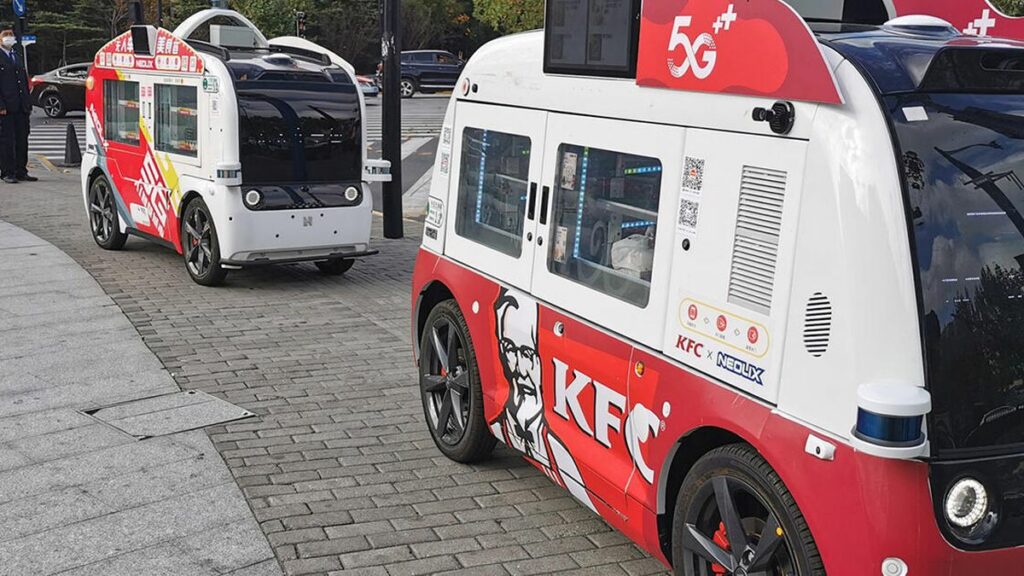With everyone encouraged to practice social distancing during the pandemic, companies are looking at new ways to keep business going without human contact. Contactless payment and food delivery have boomed in recent months, but the fried chicken expert KFC decided to take it a step further. Its franchises in China are now offering all its products on the streets of Shanghai in self-driving trucks.

Self-driving cars are here… and they’re delicious
The chicken trucks, serving socially-distanced food, were first spotted in front of a metro station by users on Twitter, and they caused quite a stir. They are part of a partnership between Chinese tech startup Neolix and Yum Brands, which owns KFC. You can place an order on the screen and it accepts payment via QR-code.
The vehicle has a screen above it indicating the products and the prices, with a 5G sign on top of it. It’s an original and effective dynamic, especially in these times of pandemic. There is no contact with customers, workers or with the transport driver, reducing the risk of getting COVID-19.
KFCの無人販売車があった。 pic.twitter.com/GyI661MlsR
— プーアル (@shanghaineko) November 17, 2020
Neolix is a supplier of mini delivery vehicles for food sales, patrols, and delivery in China. Apart from KFC, they are also working with Pizza Hut for a similar restaurant on wheels service. Their vehicles have a mileage of 100km on a single charge and a maximum speed of 50km/h, working with an array of sensors that help steer the car and keep it out of trouble.
While it’s not the exact type of self-driving car we were imagining, it shows that progress is being made, and at least in some instances, the technology is already already here. Autonomous vehicles use technologies such as LIDAR (light detection and ranging), GPS, and computer vision to sense their environment. They have advanced control systems that can track sensory inputs to detect avoid a collision.
For vehicle manufacturing companies, China will be one of the main markets, as it’s already the world’s largest automobile market. But China’s growth in cars is overtaxing the country’s automotive-related infrastructure and driving increased traffic congestion and pollution — two problems which have become ubiquitous in Chinese cities.
Autonomous vehicles offer a potential solution to some of these problems. They could reduce the number of cars on the road and allow drivers going to work to relax en route, even helping to reduce emissions if they are powered by electricity or hydrogen.
A report by the consultancy McKinsey forecasted that autonomous vehicles could account for 66% of the passenger-kilometers traveled by 2040 in China, generating market revenue of $1.1 trillion from mobility services. They would make up over 40% of new vehicle sales in 2040 and 12% of the vehicle installed base.
Alongside autonomous food and drinks services, self-driving taxis are also expected to be a reality in China’s main cities by 2023. A number of robotaxi projects have popped up over the past two years, with companies such as AutoX and WeRide trying to create viable autonomous ride-hailing businesses
AutoX, owned by e-commerce giant Alibaba, develops hardware and software for cars that make them driverless. This year the company introduced a robotaxi service in Shangai. WeRide, a start-up that develops driverless technology, launched a similar service in the southern city of Guangzhou at the end of 2019.









